Northern Catalpa (Western Catalpa)
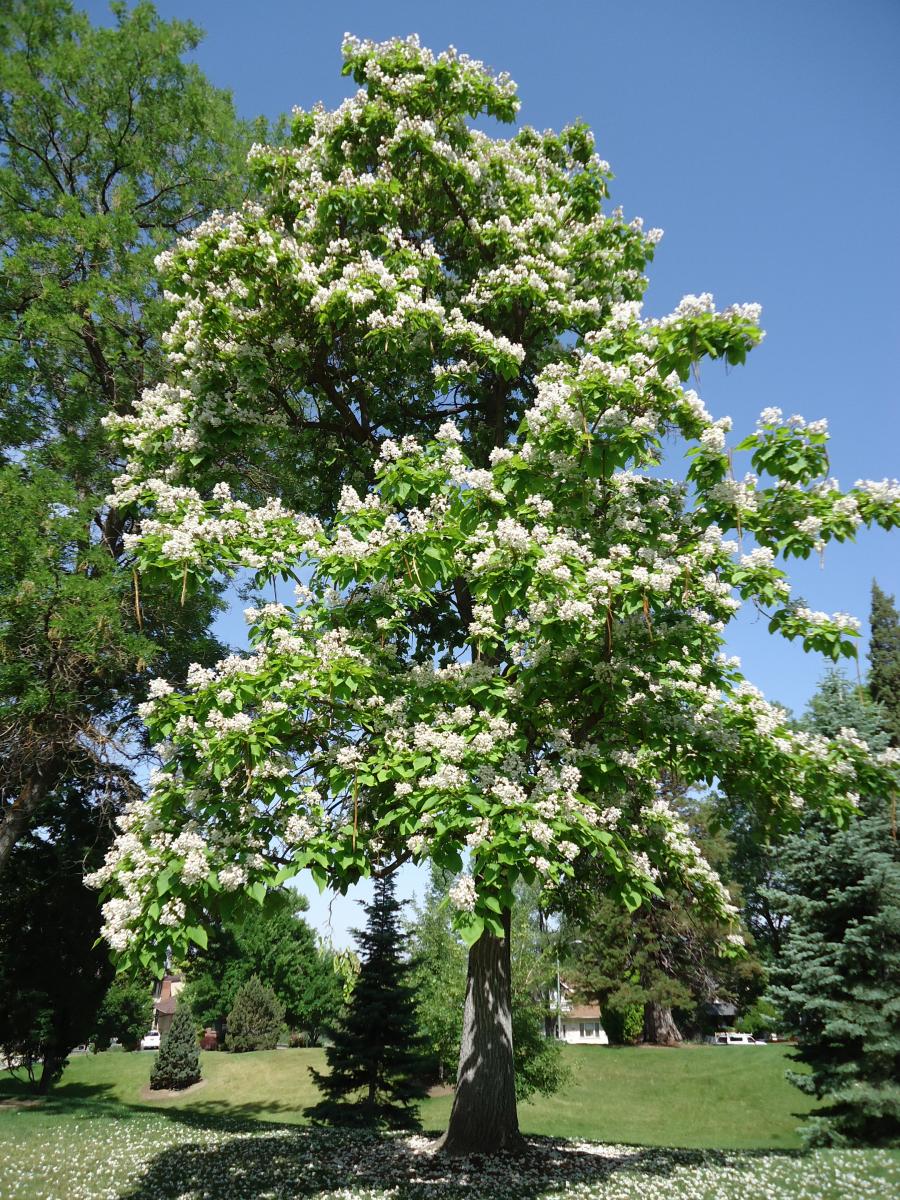
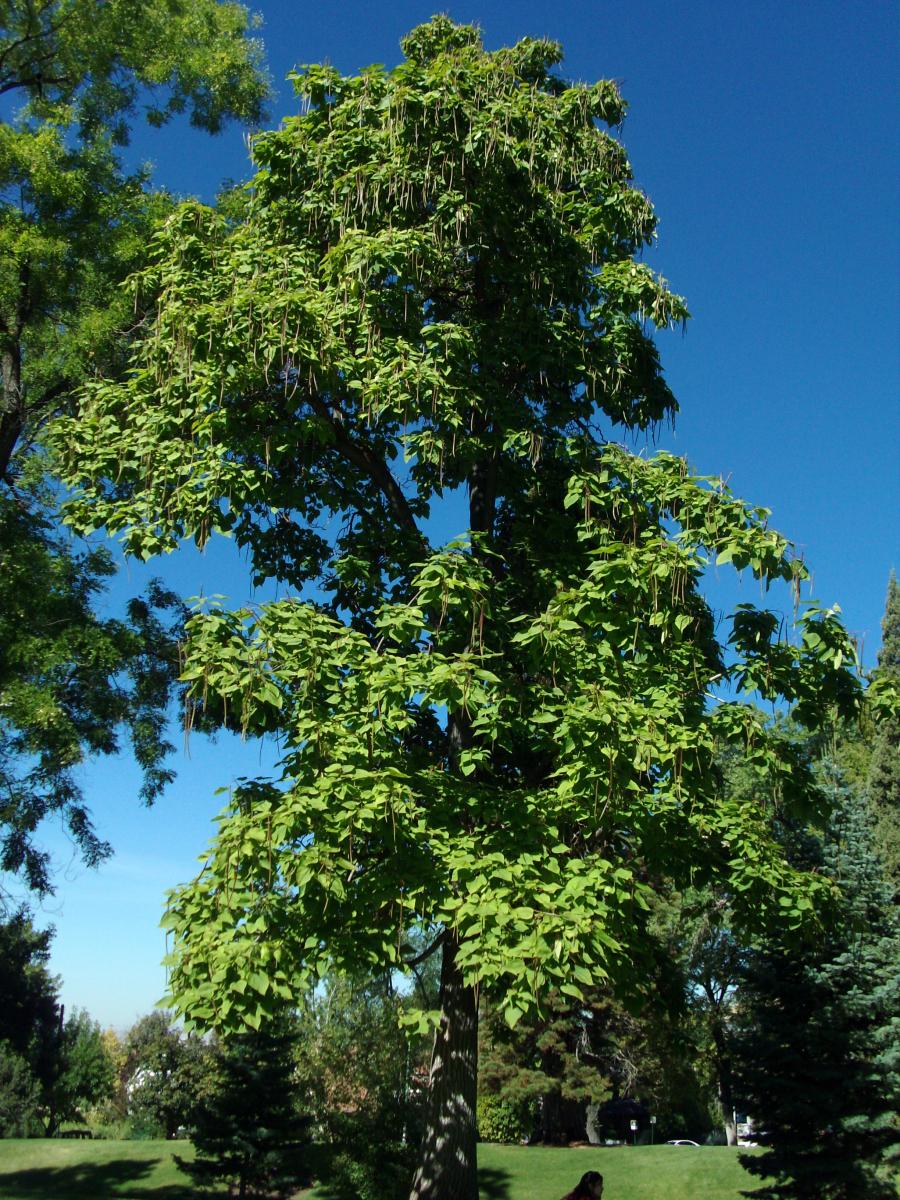
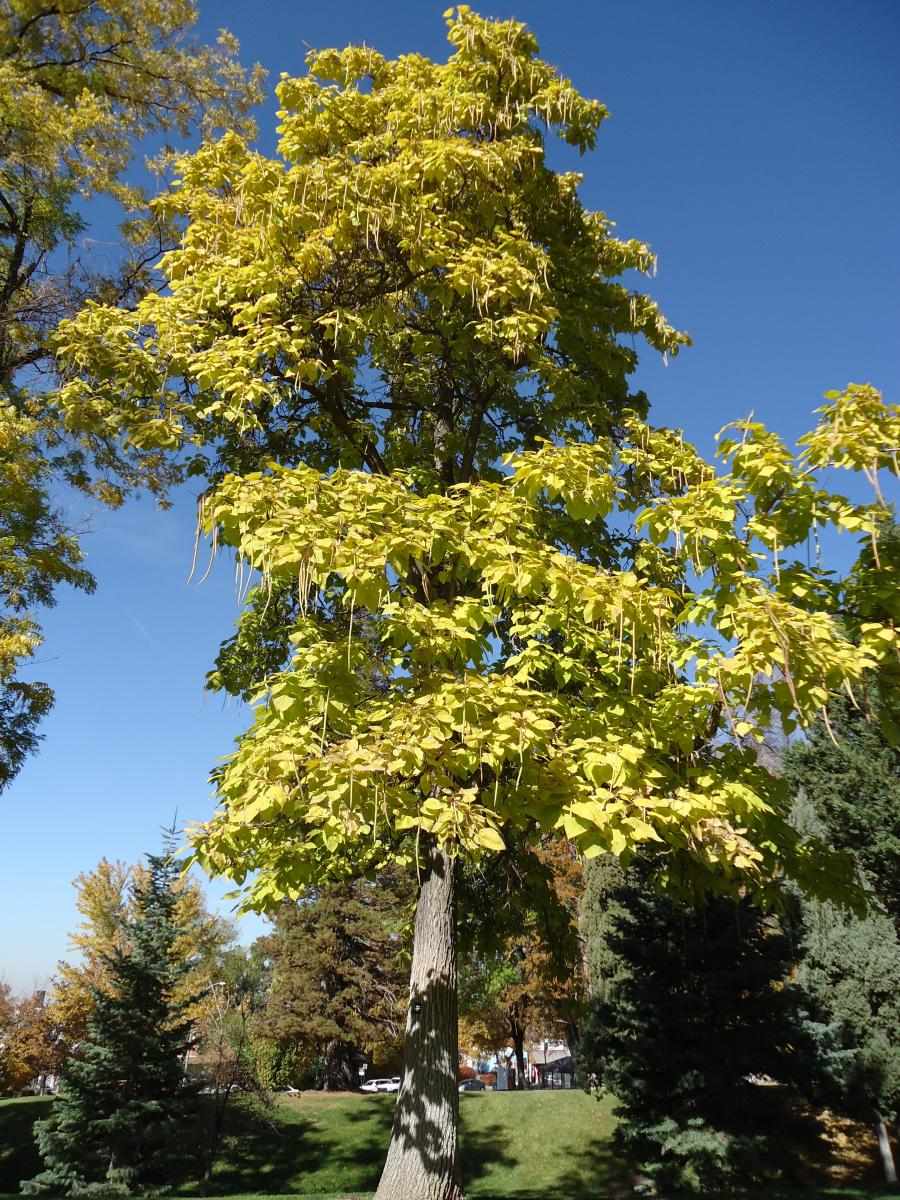
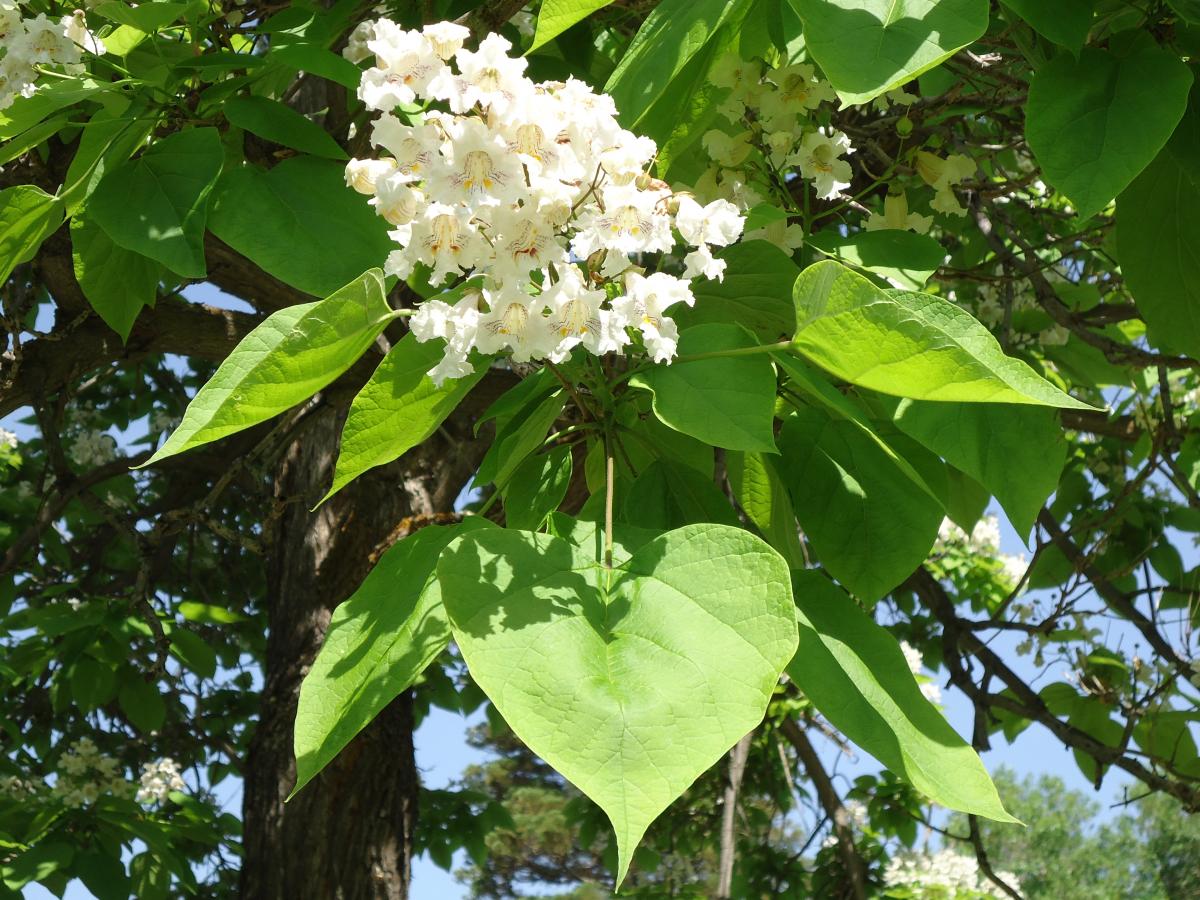

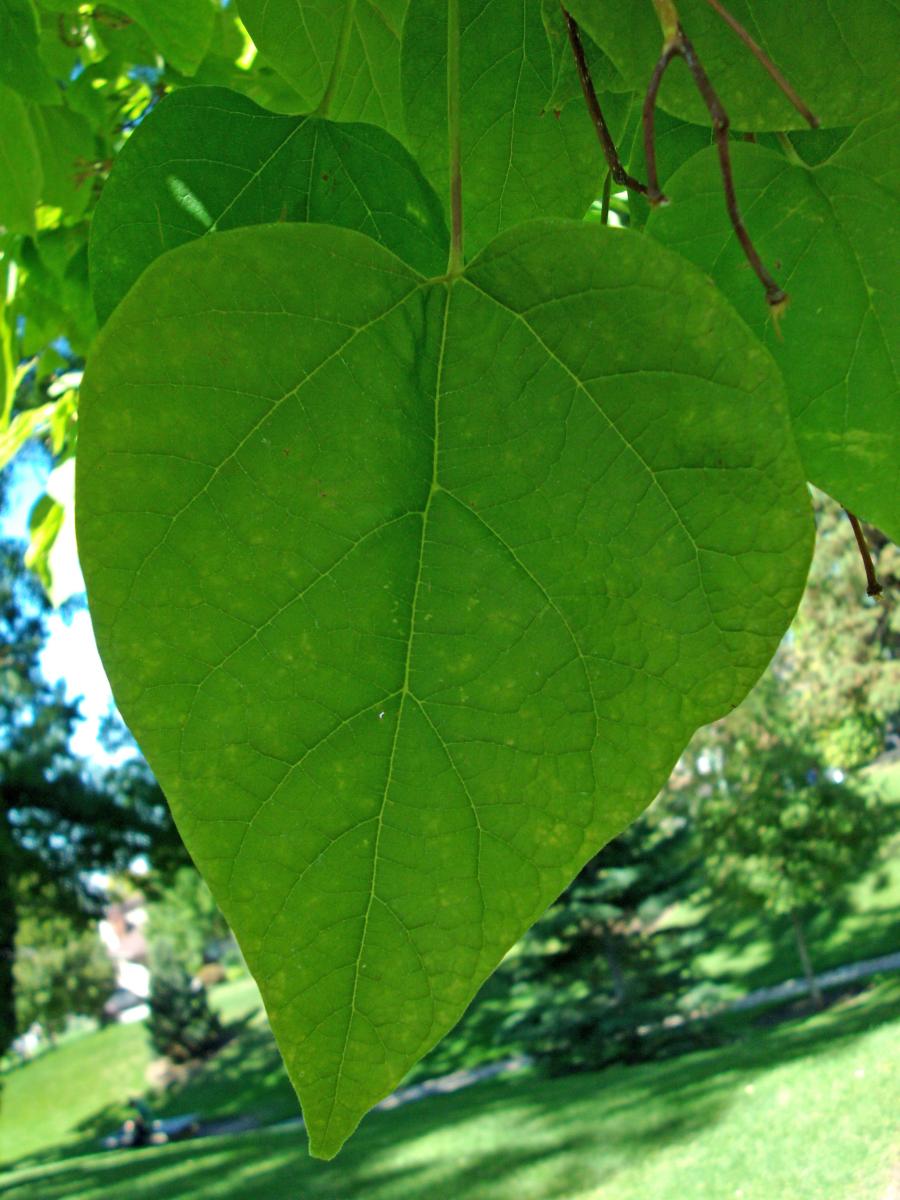
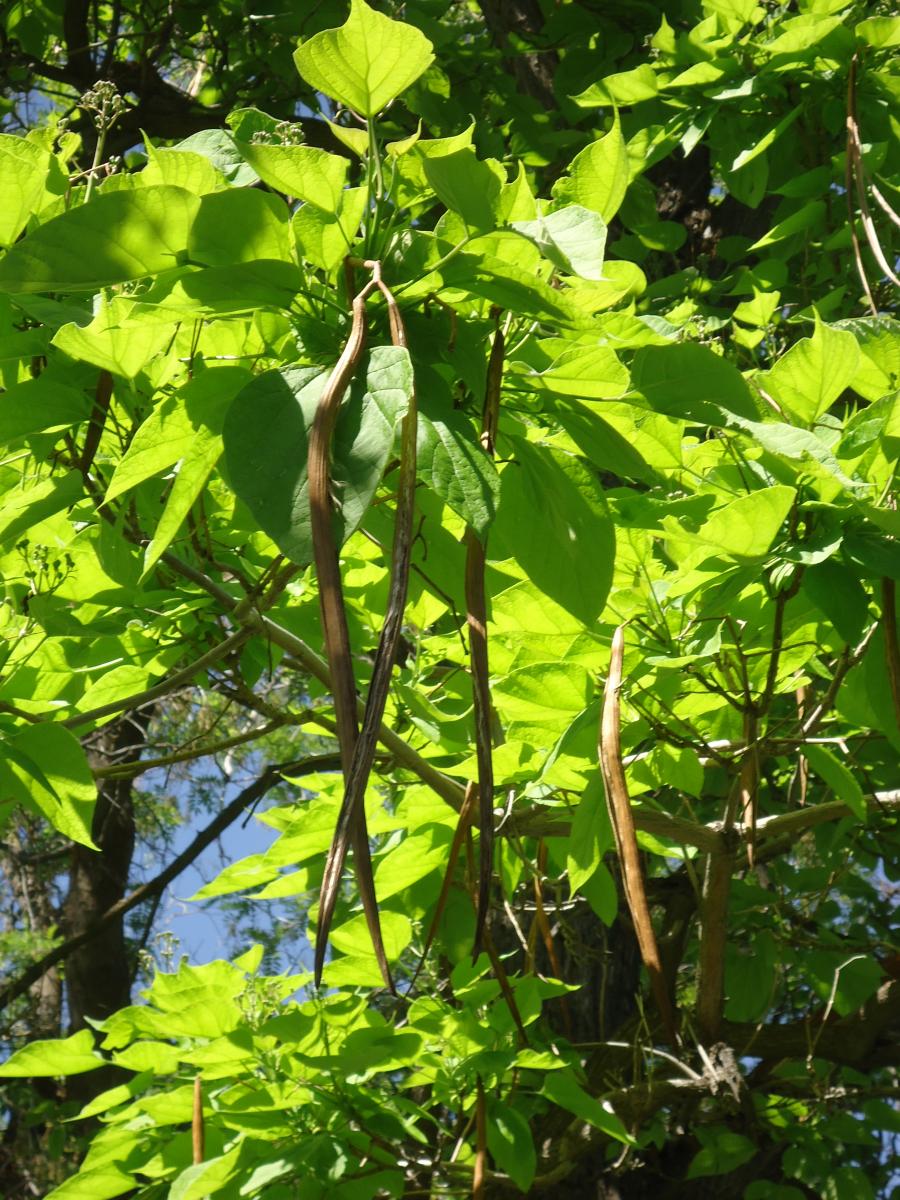
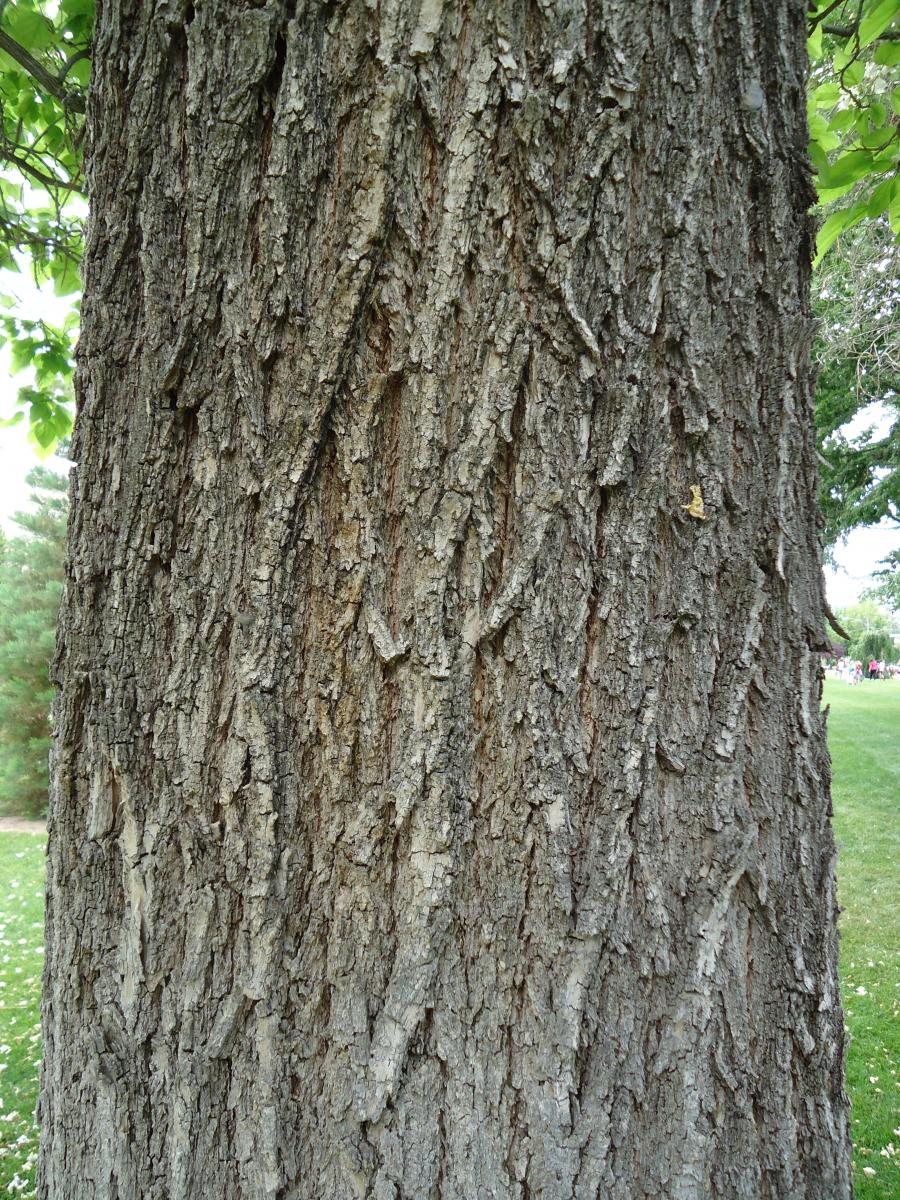
Catalpa speciosa
Leaves: Deciduous. Heart-shaped leaves vary from 6 to 12 inches long and 3 to 8 inches wide. Smooth leaf edge. Medium to bright green color. Fall color is insignificant, leaves sometimes drop while still green.
Bark/Twigs: Grayish brown bark with furrows, sometimes thick and scaly looking.
Flowers/Fruit: Trumpet orchid-like flowers grow together in beautiful conical clusters 4 to 8 inches long. Individual flowers are white with yellow and pink-purple speckles inside and 2 inches long. Blooms late spring to early summer (late May to June). 8 to 20 inch long brown, fruit capsules look like a giant vanilla bean and persist on the tree through the winter.
Mature size and shape: Large. 40 to 60 feet high x 20 to 40 feet wide. Irregular shape, somewhat narrow oval and open. Branches grow in an interesting, twisting manner that create winter interest.
General information/special features: Plant in full sun. Moist, rich soil is preferred. Adapts well to harsh conditions and soil. Withstands hot dry environments.
Landscape use and maintenance: Large, flowering shade tree. Also a beautiful specimen tree with a unique form. Does well in Utah. Medium to fast growing rate. High maintenance. Tends to be messy, dropping flowers, leaves, and fruit capsules at different times. Wood is brittle and small branches can break off in storms.
USDA Hardiness Zone: 4 to 8
Family/Origin: Bignoniaceae – Catalpa. Native to a small area in southeastern Missouri, southern Illinois and Indiana, western Tennessee and Kentucky, and northeastern Arkansas.
Campus Use: Common. Can be found west of William Stuart Building (Bld 6).
